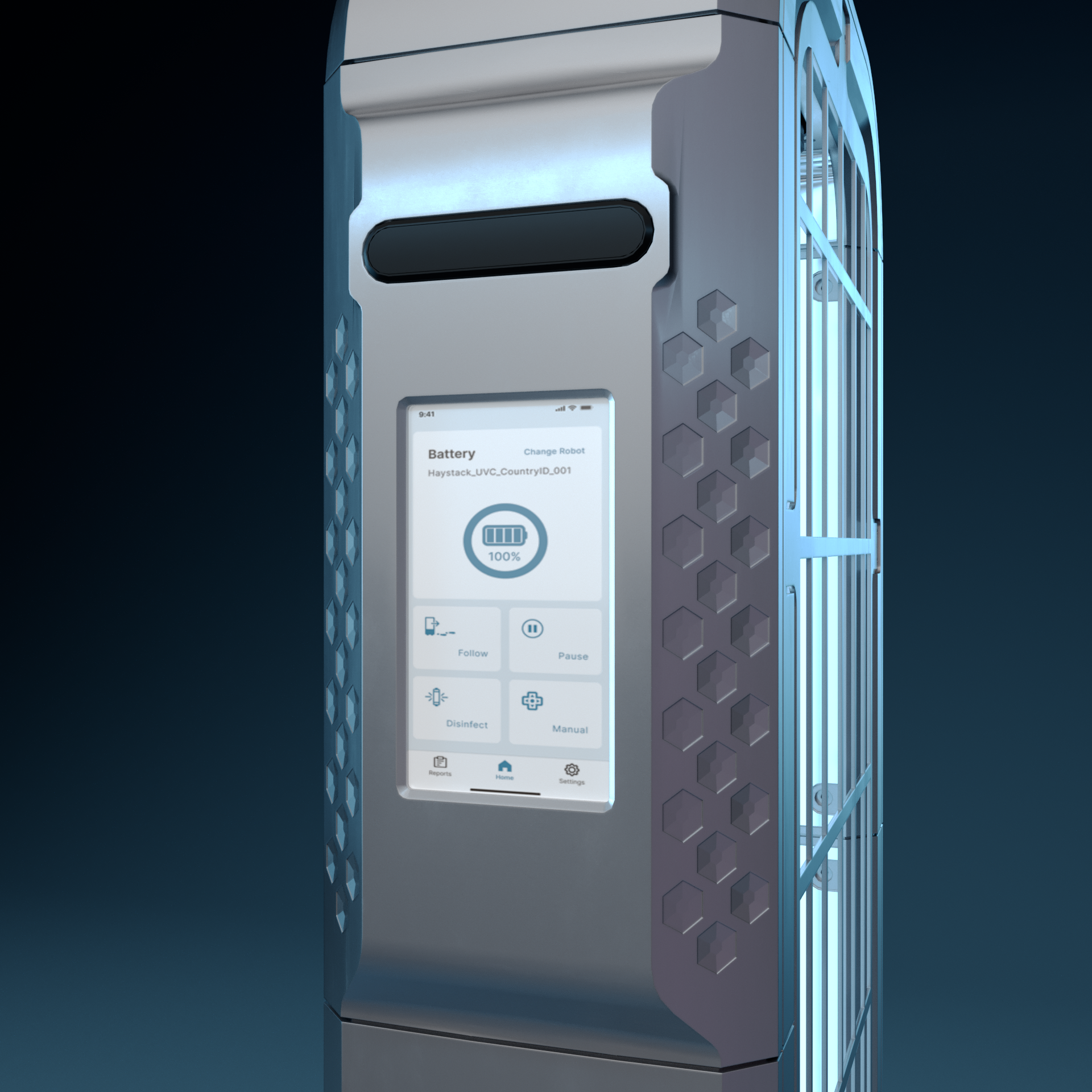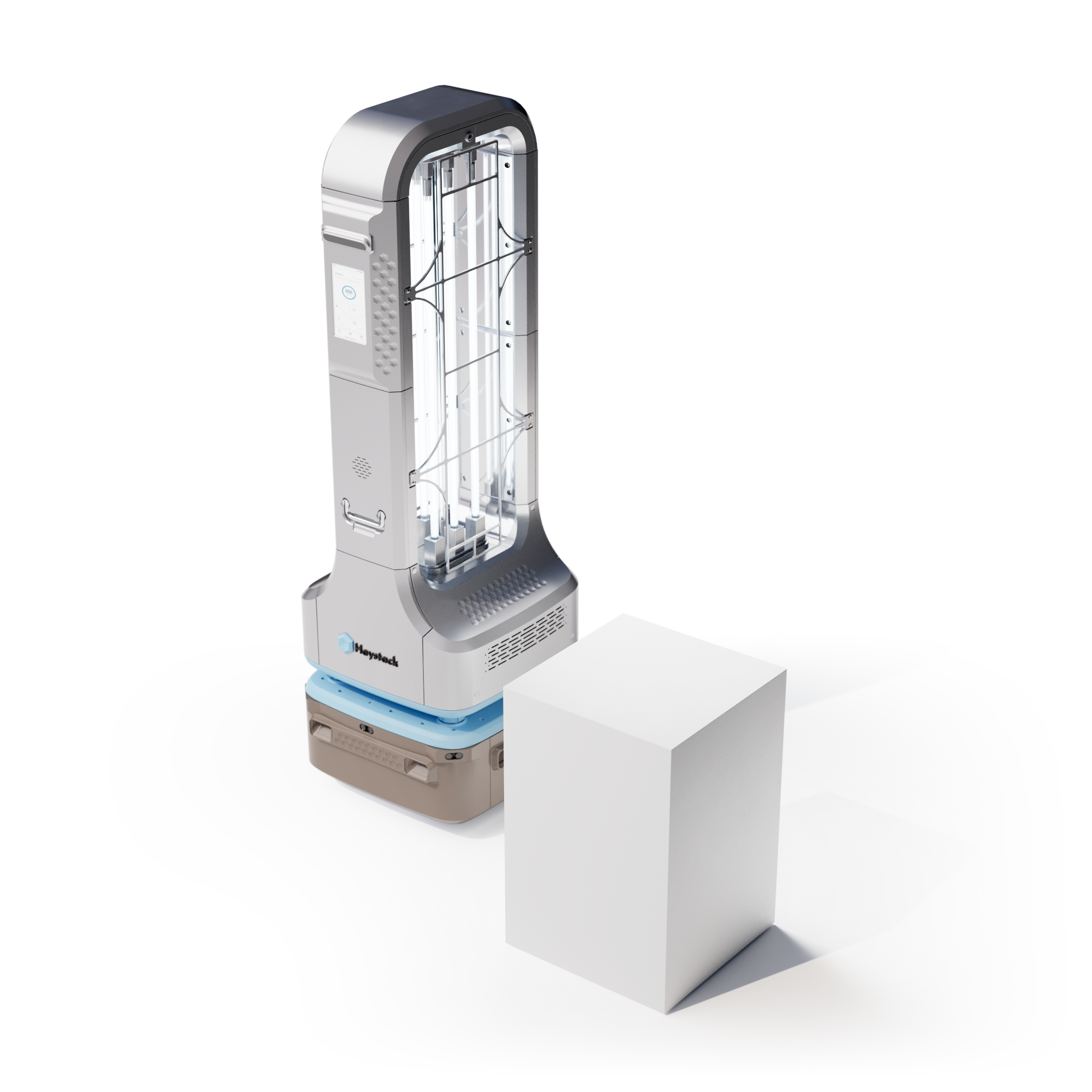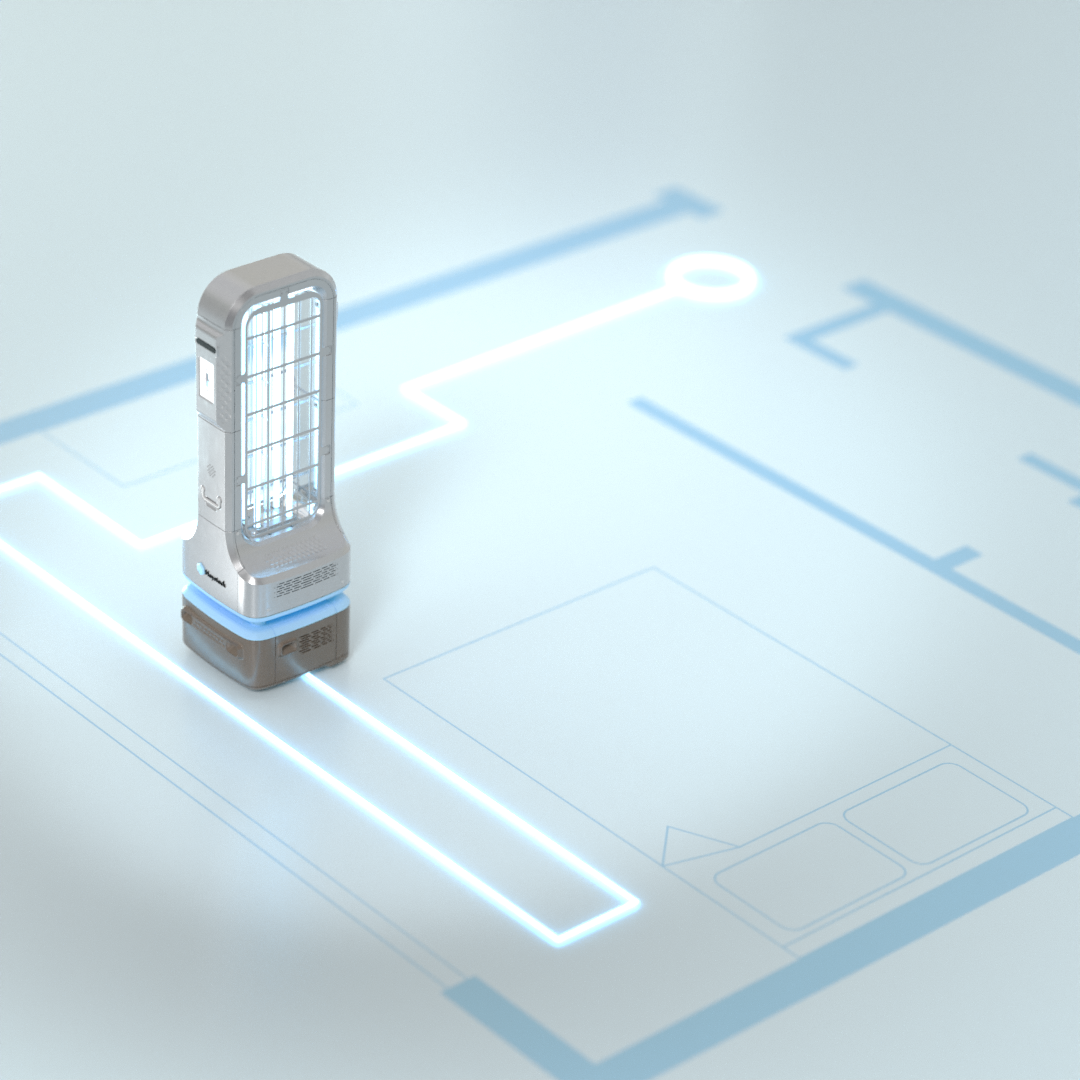
Easy to Use
With a simple, intuitive interface you can learn to use our robot in 15 minutes. And violet’s self-navigation means no room pre-mapping or manual training required, just push a button and start disinfecting.

Mobility
Light travels in a straight line. Areas in shadow are not
disinfected by a stationary UV-C light source.
Our mobile robot ensures superior coverage, moving
around furniture and objects to eliminate germs and viruses
hiding in shadowy spots of the room.


Verifiable Disinfection Reports
Downloadable coverage reports with detailed information on when a room was disinfected, the total disinfection time, and a map of the coverage area.

Smart Disinfection
Haystack Robotics’ patented smart disinfection with object recognition means violet spends more time on the high touch areas of a room. Powerful AI algorithms identify high touch surfaces such as doorknobs and light switches, increasing the disinfection time as the robot passes those areas to ensure a thorough cleaning.
